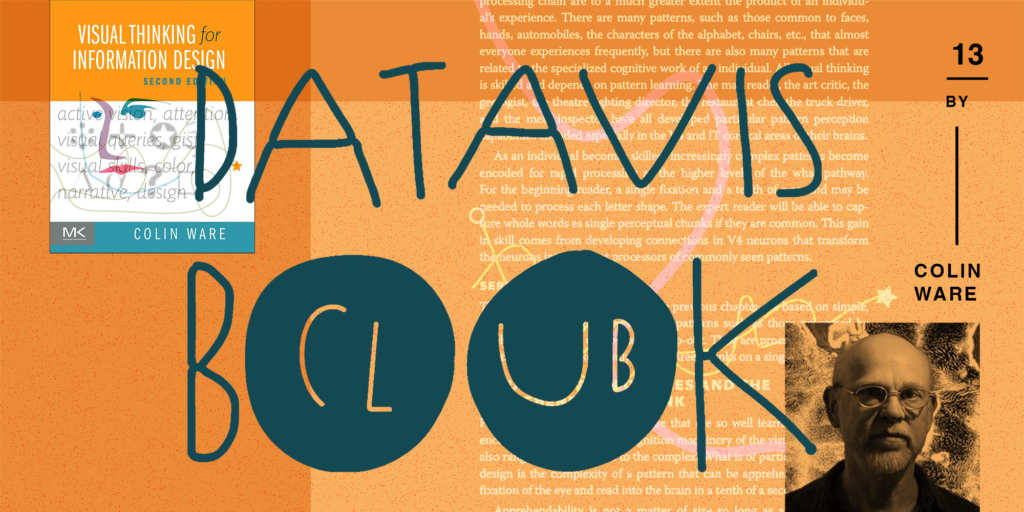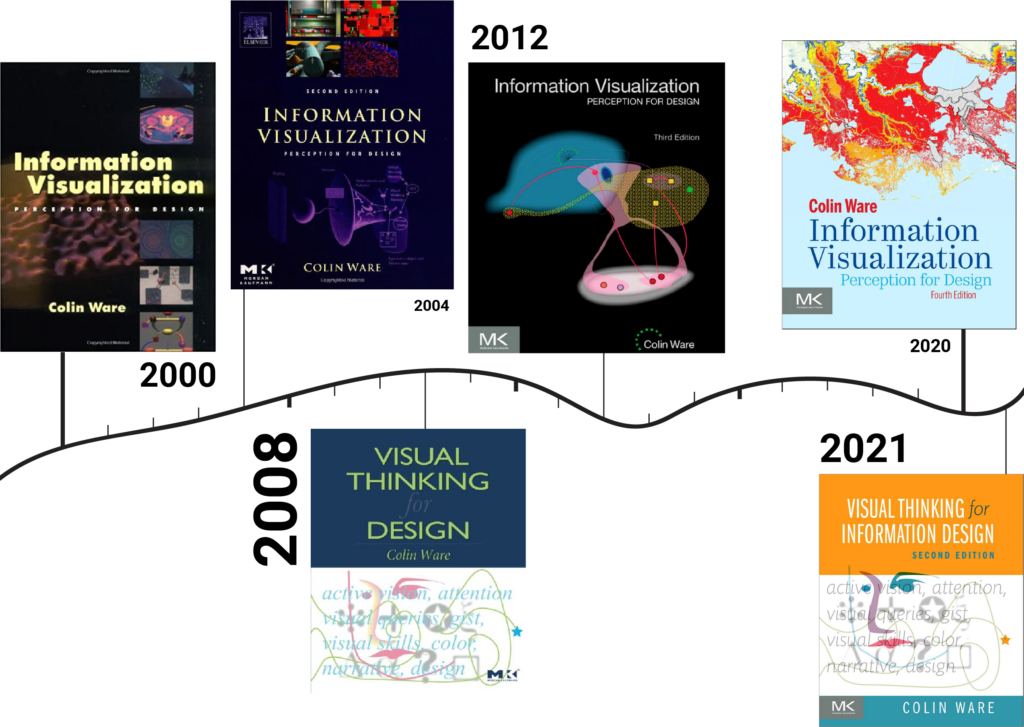Read “Chart Spark” by Alli Torban with us!
June 17th, 2024
6 min
This article is brought to you by Datawrapper, a data visualization tool for creating charts, maps, and tables. Learn more.
“…our brains predict the future all the time, from moment to moment, from day to day, and for longer terms. We could not function otherwise.”

Do you keep getting recommendations for data vis books, maybe even buying them, but then don’t make it a priority to read them? Let’s get more out of these books by reading and discussing them together. That’s what the Data Vis Book Club is for. Here’s what we’ll read next — join us!
After discussing Nadieh Bremer and Shirley Wu’s “Data Sketches” in August, I’m happy to announce the next book for our book club: Colin Ware’s “Visual Thinking for Information Design”!
We will discuss Visual Thinking for Information Design on here: notes.datawrapper.de/p/bookclub-visualthinking
That’s 10 a.m. on the U.S. West Coast; 12 p.m. in Chicago; 1 p.m. on the U.S. East Coast, Colombia, and Peru; 2 p.m. in Brazil and Argentina; 6 p.m. for readers in the U.K. and Portugal; 7 p.m. for most other Europeans; and 11:30 p.m. in India.
Colin Ware himself will join us around 45 minutes into the discussion to answer all our questions.
Like always, everyone is welcome to join! Just open the notepad at the correct date and time and start typing. Many participants will be new to the conversation — we’ll figure it out as we go.
Colin Ware is a research professor (meaning, he publishes a lot). In the data vis community, he’s known especially for two books that he wrote a bit earlier than most data vis books were written, making them classics: In 2000, Ware published “Information Visualization: Perception for Design”; eight years later followed “Visual Thinking for Design.” Ware updated it this year and renamed it “Visual Thinking for Information Design.” It’s the slightly less popular and thinner book of the two — but people who’ve read both told me that “Visual Thinking” is the better choice for the book club, and we’ll trust them.
Both books are about the same topic: Perception and its implications for design. “It is a book about how we think visually,” Ware explains in the preface to “Visual Thinking,” “and what that understanding can tell us about how to design visual images.”

Both books are also textbooks — and while that combination (“textbook” and “perception”) sounds fairly dry, I can assure you: It’s not. Ware writes well. He’s apparently interested in communicating the topic in a way that’s interesting and sticks.
If you want a list of simple data vis rules or a guide on how to build a bar chart in D3.js, this book is not for you. If you want to go deeper into the science of how your visualizations are read and get better at arguing for and against certain design decisions, this is a great book to first read and then refer to.
1. You get “Visual Thinking for Information Design.” Ask your local library to order it for you, buy it, borrow it from a friend, ask around on your preferred social network. The second edition (the one we’ll read) only came out in August 2021, and — warning — is fairly expensive. The first edition, “Visual Thinking for Design” from 2008, might be easier to find in libraries. Ware added a new eighth chapter to the second edition; besides that, it looks and reads the same on most pages.
2. We all read the book. This is where the fun begins! Please mention @datavisclub or use the hashtag #datavisclub if you want to share your process, insights, and surprises — I’ll make sure to tweet them out from @datavisclub as motivation for us all. Don’t worry if you don’t read every word on all 200 pages of this dense book! Start by reading the chapters that appeal the most to you and see how far you get.
3. We get together to talk about the book. This will happen digitally on Tuesday, January 18, at 6 p.m. UTC over at notes.datawrapper.de/p/bookclub-visualthinking.
It won’t be a call or a video chat; we’ll just write down our thoughts. The discussion will be structured into three questions:
During the conversation, I’ll ask these three questions in the following order:
1 What was your general impression of the book? Would you recommend it? To whom?
2 What was most inspiring, insightful, or surprising? What did you learn that you didn’t expect to?
3 Having read the book, what will you do differently the next time you visualize data?
For each question, you can prepare an answer in 1-2 sentences and paste it into the notes once I ask the question during the conversation. If you can’t find the time to prepare anything at all just come by and chat – we’ll quickly get into discussion mode.
After discussing these three questions for about 45 minutes, Colin Ware will join us to answer questions we might have about their book.
Here’s a short FAQ for you, in case you have more questions:
A digital book club is a new experience for many of us. See what our book club discussions have looked like in the past:

You can also read the review of the first book club, to learn how people found the experience.
This is what others have said about some of the last book club discussions:
Because it works well for introverts and for people who prefer to stay anonymous in the discussion. Plus, native English speakers have less of an advantage than they have in calls. Plus, the documentation of our meeting writes itself.
Do you have a lunch date? Vacation? Need to put the kids to bed? Need to sleep yourself? No problem! The conversation will be archived in the notes and can still be extended over the next day(s).
You can either subscribe to our Datawrapper Blog Update newsletter, turn on notifications for our Twitter account, or leave your Twitter handle in a list. I explain all three options in more detail here.
I’m very, very much looking forward to working through the chapters of “Visual Thinking” with all of you. If you have any more questions, write them in the comments or send them to lisa@datawrapper.de or to Lisa / Datawrapper on Twitter. Also, make sure to follow @datavisclub to stay up-to-date and get a dose of motivation from time to time. I’ll see you in January!
Comments